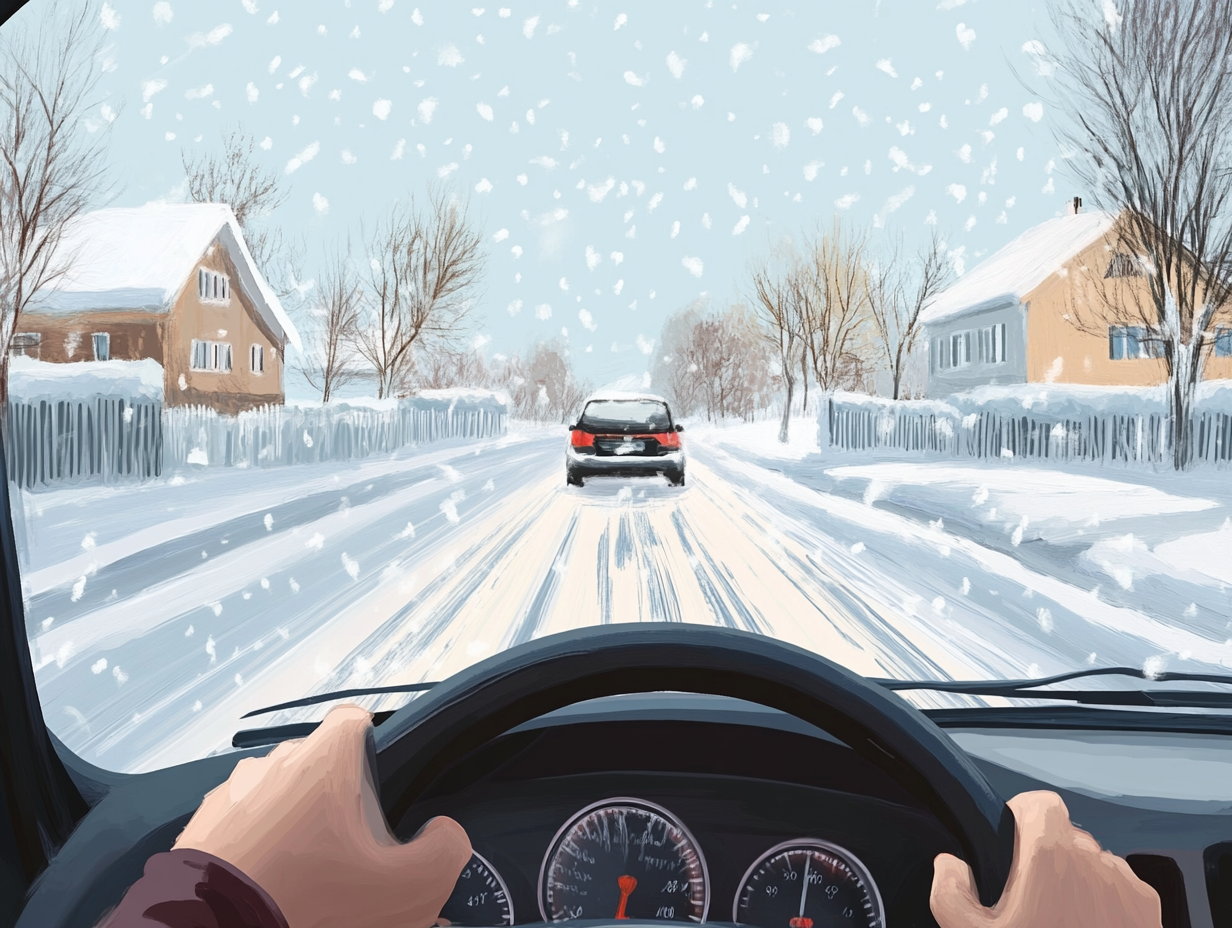To make the most of your winter adventure while staying safe, it’s essential to plan ahead and take extra precautions. Here are some key safety tips to ensure your winter road trip is both enjoyable and safe
Winter road trips can be a magical experience, offering stunning snow-capped landscapes, picturesque mountain views, and the thrill of the open road. However, as recent viral videos of helpless cars sliding in snow shows, winter driving can also be treacherous. Whether you’re heading to a snowy hill station or taking a scenic drive through the mountains, it’s crucial to be well-prepared and take safety seriously.
To ensure you enjoy a safe and smooth winter road trip, here are some essential winter driving tips.
Follow The Weather Forecast
Before setting out on a road trip, especially during winter, checking the latest weather forecast is crucial. This helps you anticipate potential hazards, such as blizzards or freezing rain, that could impact your journey. Even if your trip is a few days or weeks away, monitoring the forecast regularly is important. Numerous weather apps provide up-to-date projections, informing you of any developing issues. This allows you to adjust your plans, whether by reconsidering the trip or choosing an alternate route to stay safe.
Do A Quick Vehicle Check
A thorough vehicle check is one of the most crucial steps before embarking on a road trip, particularly in winter. Ensuring your car is in optimal condition can help prevent unexpected issues on the road. Key areas to inspect include car fluids, wiper blades, lights, tyre pressure, the battery, and your spare tyre with a hanging kit.
Start by checking essential fluids such as engine oil, brake fluid, transmission fluid, power steering fluid, and coolant to ensure they are at the appropriate levels. Inspect your wiper blades for wear and tear, ensuring they can effectively clear the windshield. Don’t forget to verify that all car lights—headlights, taillights, brake lights, and turn signals—are functioning properly.
Next, check the tire pressure, including that of the spare tire, to ensure it is at the recommended levels for safe driving. Also, ensure your car’s battery is in good condition and has enough charge for the journey. Lastly, ensure you have a spare tyre and a changing kit in an emergency. These steps will give you peace of mind and a safer road trip experience.
Carry Some Winter Essentials
Having winter essentials in your car is crucial, not just for long road trips but also for everyday winter driving. These items can help you navigate through potential winter challenges and ensure you’re prepared for the unexpected. Key essentials to keep on hand include an ice scraper and brush for clearing your windshield, jumper cables for a quick battery boost, and a collapsible road shovel for handling snow-related issues.
Additionally, consider carrying tyre chains or a tow strap for situations needing extra traction or assistance. Investing in snow tyres can also greatly improve your vehicle’s performance and safety in icy or snowy conditions. By packing these items, you can confidently drive and avoid being caught unprepared during winter travels.
Build A Winter Emergency Kit
In addition to winter maintenance items, having a well-stocked emergency kit in your car during the winter season is essential for ensuring your safety and comfort. It’s important to have enough supplies for yourself and keep age-appropriate necessities for your children.
Here’s a list of winter emergency kit items that will cover all your needs: blankets, hats, socks, and mittens to keep warm, a flashlight with extra batteries for visibility, a first aid kit for emergencies, bottled water, hand warmers, winter boots, non-perishable food and snacks to stay nourished, extra winter clothing, and a portable phone charger to stay connected. If you’re travelling with a small child, don’t forget their essentials, such as bottles, diapers, wipes, and other items they may need for comfort and care.
Avoid Warming Your Car In The Garage
Carbon monoxide poisoning is a serious winter hazard, and many people mistakenly believe they are safe leaving their car running in the garage with the door partially or fully open. However, carbon monoxide can still accumulate and pose a threat, even with open garage doors or enclosed spaces. As a result, it’s never safe to warm your car in the garage, regardless of the cold weather outside.
Instead, consider backing your car into the driveway to get the heat pumping before you head out. This ensures that you avoid the dangers of carbon monoxide buildup in an enclosed space. Additionally, if you’re caught in a snowstorm, always clear the exhaust pipe of any snow or ice buildup. This helps prevent another potential carbon monoxide threat and ensures your safety on the road.
Know Your Brakes
Understanding how your brakes work is essential, especially during winter driving. You may remember from driver’s education that you were taught to pump the brakes in certain situations. While this still applies to some vehicles, if your car is equipped with an antilock brake system (ABS), it will automatically pump the brakes when it detects traction issues. In such cases, you must press firmly on the brake pedal if you begin to slide.
Driving at a reduced speed is always recommended during winter conditions as it can significantly reduce the likelihood of skidding and improve your vehicle control ability.
Keep An Eye On The Gas Tank
While it may be tempting to push a few more miles and avoid the hassle of stopping, ensuring enough gas in your tank is crucial for winter trips for two key reasons.
First, if you get stuck in the snow or need to stop in extreme conditions, you may need to keep the car running to keep your family warm. Extra fuel ensures you can run the vehicle for as long as necessary.
Second, in freezing temperatures, condensation can build up in your gas tank where there is air space. If temperatures dip below freezing, this moisture can freeze, potentially causing issues with your vehicle’s performance. Keeping your fuel tank fuller reduces the space for this vapour, minimizing the risk of it freezing and hindering your car’s operation.
Be Calm In The Event Of An Emergency
In an emergency situation while driving in winter, always stay with your vehicle and avoid leaving it in search of help. Waiting inside the car is safer, providing shelter from the elements. To increase your visibility and signal for assistance, tie brightly coloured items to your antenna or keep your interior lights on at night. This will help attract attention and make it easier for rescuers to find you. Staying visible and safe is essential to ensuring you and your loved ones make it through the situation unharmed.



